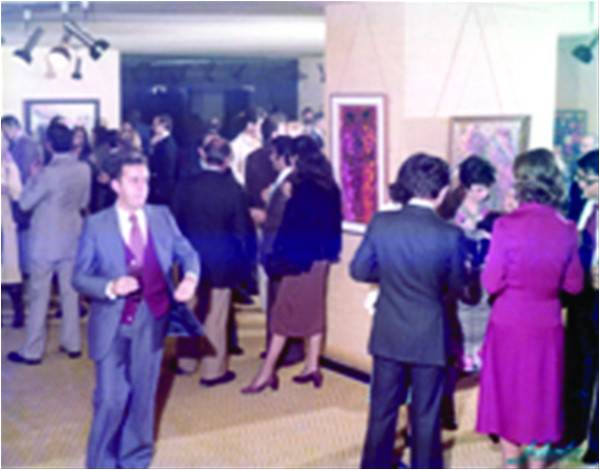
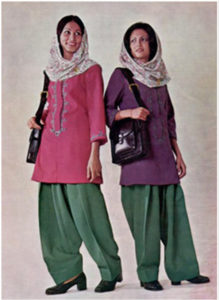
PIA had the distinction of having offices at prime locations everywhere in the world: 5th Avenue in New York, Piccadilly in London, Champs-Elysees in Paris, opposite Central Railway Station in Frankfurt, Dam Square in Amsterdam, Vester Farimagsgade in central Copenhagen, Qasr-el-Nil near Tahrir Square in Cairo, Surawong Road in Bangkok, Ginza in Tokyo and Torre de Madrid in Plaza de Espana: the throbbing heart of Madrid that connects Gran Via to Calle de le Princesa. These two streets have the same status in Madrid as Oxford Street in London and the Champs-Elysees in Paris. No tour of Madrid is complete without a visit to Plaza de Espana. This large square with bubbling fountains has a massive monument to Spanish novelist, poet and playwright Miguel de Cervantes Saavedra, a bronze sculpture of the fictional Don Quixote holding a lance and his companion Sancho Panza riding a donkey. The royal palace is within walking distance, as is the Debod Egyptian temple. This temple, dedicated to goddess Isis, was built near Aswan, and was gifted to Spain by the Egyptian Government in 1968. There are plenty of restaurants, bars, boutiques, discos, banks, departmental stores, airline offices and hundreds of hotels around Plaza de Espana. This square never sleeps.
In the Madrid PIA office, we had staff from Spain, Uruguay, Argentina and Brazil. This combination turned out to be commercially very successful for PIA. We made inter-line deals with Latin American airlines to carry their passengers on our flights from Paris, Frankfurt and Rome to the Middle East. We got the lion’s share out of passengers travelling to the Philippines because of convenient connections on our flights to Manila. China was just opening up for tourism and PIA was given a quota of 2,000 visas per year if the passengers were travelling on its flights. It was a great advantage for PIA but running an offline office, I could not share the quota. The Pakistan Embassy helped me in obtaining 300 visas from the Chinese Embassy in Madrid. PIA’s Silk Route flight from Karachi to Tokyo made a night stop in Beijing. We took full advantage of this night-stop and offered our passengers hotel accommodation, city tours and a Beijing-Duck dinner in the same airfare. The Madrid office became self sufficient within six months and is the only office out of the eight offline offices opened in 1974 that is still operational.
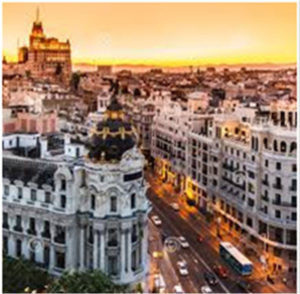
In May 1975, the First General Assembly of the World Tourism Organization was held at Palacio de Congresos in Madrid. Mr. Roedad Khan, the then Tourism Secretary, was the leader of our delegation. Mr. Khan was elected as the Vice President of the General Assembly. Our delegation, though small, was held in high esteem because Pakistan was the frontrunner in tourism in Asia. Mexico City and Madrid were competing to be selected as the Headquarters of the World Tourism Organisation. The Spaniards did such a superb job in organising the congress deliberations and evening entertainment programmes that Mexico City stood no chance. Madrid was finally declared as the WTO Headquarters. Two years later, in May 1977, the second General Assembly of WTO was held in Torremolinos, southern Spain, and Mr. Khan was again leading our delegation. I recall an arrogant remark made by the Iranian minister of tourism, during his speech to the General Assembly, “Ladies and gentlemen! I am proud to say that Iran is no more a third world country.” Little did he know that the ‘first world’ Iran of his master, Reza Shah Pahlavi, would wither within two years when the Shah, along with his wife, Farah Deba, would leave Tehran on the 16th of January, 1979 - never to return again.
Pakistani embassies and PIA traditionally are hand in glove everywhere, but unfortunately not so in Madrid. On 20th November, 1975, General Francisco Franco who had ruled Spain for 36 years died at the age of 83. A Federal Minister came to Madrid to represent Pakistan at the funeral. In spite of the cold attitude of the embassy, I had to call on the minister. After waiting in vain for two hours at the embassy, I decided to go back to my office. While I was leaving, the Minister along with Air Marshal Rahim Khan came out of the Ambassador’s office. What a surprise! Mr. Taj Jamali, the Minister of labour and manpower, was my friend from F. C. College. Since his official visit was over, he shifted to my apartment and stayed with me for several days. I feel that this incident did help in melting the ice between the embassy and PIA Madrid.
The casino in Karachi was scheduled to open in November and I was asked to contact Ms. Lucero Tena to perform on the opening night
Pakistan International Airlines was considered the international face of Pakistan, and the people in political power always desired to push their influence in one way or the other. It is believed that in 1975, Begum Nusrat Bhutto, the first lady of Pakistan, desired that the airhostesses’ uniform be changed. Sir Hardy Amies, the designer to Her Majesty Queen Elizabeth II, was asked to design the uniform. He came up with a very modest and shabby design, using green shalwar and embroidered pink and mauve Kameez. He retained Pierre Cardin’s dopatta but added a traditional pattern. The change certainly was not for the better. This unfortunately was the beginning of political interference into the affairs of PIA and that over the years turned the airline into a fief of politicians and dictators - who burdened the airline with visionless cronies.
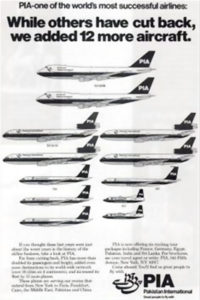
There are several amazing towns within a 100-kilometre radius of Madrid that are great weekend getaways for Spaniards and expats living in Madrid. Out of all these towns and villages that I visited during my four year stay in Spain, a few are my favourite: Avila, founded by the Moors, now known as the ‘town of stones and saints’ is visually the most impressive citadel in Spain. A massive stone wall, two-and-a-half kilometres in radius with 88 watch towers, surrounds the town. Every tourist who visits Avila walks on the walls of this World Heritage town. I wonder how many of us know that Rohtas Fort, too, is a World Heritage site that has similar impressive towers and a massive wall that you can walk on! The defensive walls of Rani Kot in Sindh, 26 kilometres in circumference with 38 bastions is also a World Heritage site, and second only to the Great Wall of China. Toledo, at a distance of 70 kilometres Southwest of Madrid, is a Moorish town that is now a living museum and is known as the ‘Spirit of Spain’. The Moors (Muslims) conquered Toledo in 712 and built the Grand Mosque in the city centre. For almost four centuries, the Jews and Christians lived under Muslim rule in total harmony. Even after the collapse of Cordoba in 1031, Toledo remained under Muslim rule till 1085. The Grand Mosque was demolished in 1285 and a Gothic Cathedral was built, that now dominates the city skyline. Bhera, a town in Pakistan’s Salt Range with the best brick masonry work in Punjab, can rival Toledo inch by inch. The Hindu salt merchants spent lavishly on building their mansions, havelis and chaubaras that had carved wooden doors, hanging balconies and jharokas. The wood carvers of Bhera were so famous that a few were taken to London by the British to work on the doors of the Buckingham Palace. In 1999, I started a campaign along with my journalist friends “See Bhera to Save Bhera”. Unfortunately, we failed. Bhera is lost.
An American friend invited me to Torrejon Air Base, a restricted bomber facility near Madrid’s Brajas International Airport. Our Ambassador, Air Marshal Rahim Khan, was the first Asian to become a member of the prestigious MACH Busters’ Club by breaking the sound barrier in the United States of America. He was a regular visitor to the base because of his air force background. He could not believe that I was at the restricted base but he immediately invited me to his table and introduced me to his wife. His charming and graceful wife, Princess Mehrunissa, was the daughter of the Nawab of Rampur. Frankly, I was expecting that the Ambassador would discuss the visit of Air Marshal Nur Khan but he was too graceful for that. Instead he told his wife, “Mehru! Akhtar has just got married to my friend, Squadron Leader Sattu Quraishi’s daughter. Let us invite the couple over for dinner.” From that point on, Air Marshal Rahim Khan and Begum Sahiba took care of us and the attitude of the embassy dramatically changed in our favour.
Begum Bhutto's intervention began political interference into the affairs of PIA and that over the years turned the airline into a fief of politicians and dictators
PIA had leased two 747 Jumbos from TAP, (Transportes Aereos Portugueses) the national carrier of Portugal and I had to make frequent trips to Lisbon to facilitate our cockpit and cabin crew under conversion training. The Portuguese had a special liking for Pakistanis because many had taken refuge in Karachi when they were thrown out of Goa by India. Mr. Arshad Sami Khan, a valiant fighter pilot of the Pakistan Air Force who had served three Presidents and four Prime Ministers as Chief of Protocol, was the Minister at Pakistan Embassy in Lisbon. He and his wife would always invite me over to their house for dinner. The only thing annoying in that house was the constant sound of piano being played by their son Adnan. Yes! I am talking about the same Adnan Sami Khan who went on to become a famous pianist, musician and singer. Mr. Arshad Sami Khan was a great promoter of Pakistani art and culture and he organised my paintings exhibition in Lisbon, invited the diplomatic corps and managed extensive press coverage.
By 1977, PIA was well established in Spain and the Head Office was considering operating flights to Madrid. The casino in Karachi was scheduled to open in November and I was asked to contact Ms. Lucero Tena to perform on the opening night. But, in Pakistan, an international conspiracy came into action after the second general elections. The election rigging was a pretext. Bhutto’s dream of awakening the third world was to be shattered. He was fighting a losing battle. In Madrid, Air Marshal Rahim Khan resigned as Ambassador, as did General Gul Hassan in Vienna. Air Marshal Rahim Khan was heading Pakistan Air Force and General Hassan was the C-in-C of the Pakistan Army during the 1971 war with India. Finally, General Zia-ul-Haq declared Martial Law in 1977 and Mr. Bhutto was put behind bars. Mr. Hamid Ali Noon, a landlord politician from Sargodha, arrived as the new Pakistani Ambassador to Spain.
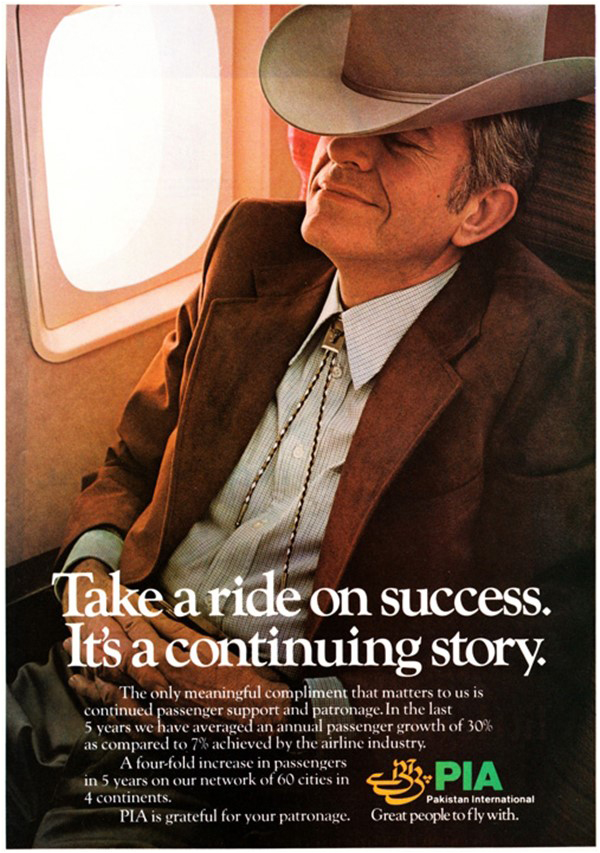
The Annual General meeting of IATA (International Air Transport Association) airlines was held at Hotel Melia Castilla in Madrid in October 1977. This is a major annual event in which the top decision makers of the airlines meet to shape the future of the aviation industry. PIA had a large delegation which was to be led by the Chairman Air Marshal Nur Khan - but I suppose due to the turmoil in Pakistan, he opted to stay back. In his stead, Marketing Director Mr. Iqbal Ahmad, a man with very low educational qualifications, was representing PIA at a forum that was highly technical. I had deliberately organised my paintings exhibition at Gallery Rincon de Arte in the lobby of the same hotel at the same time. Heads of all the participating airlines, including the President of Iberia, were invited to the exhibition and PIA received exceptional press mileage out of it. I had one paintings exhibition in Barcelona and the other in Ciudad Real in Spain, during 1978.
Mr. Iqbal Ahmad considered painting to be a waste of time and further warned me not to watch football matches during working hours. Little did he know: football matches took place only during weekends and that too at night!

